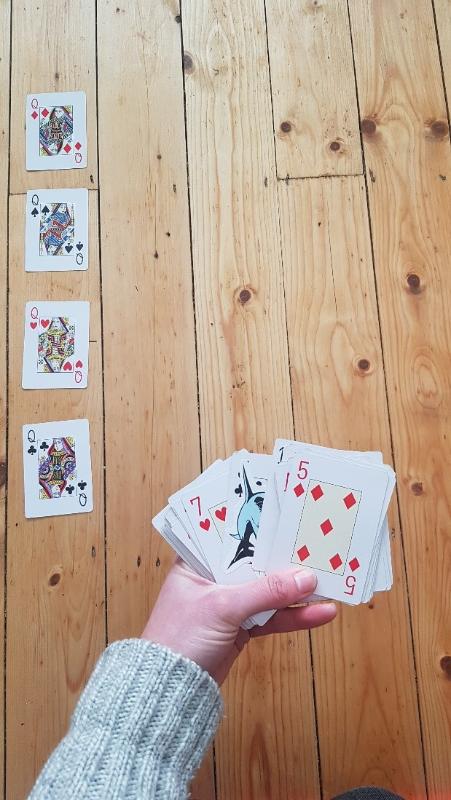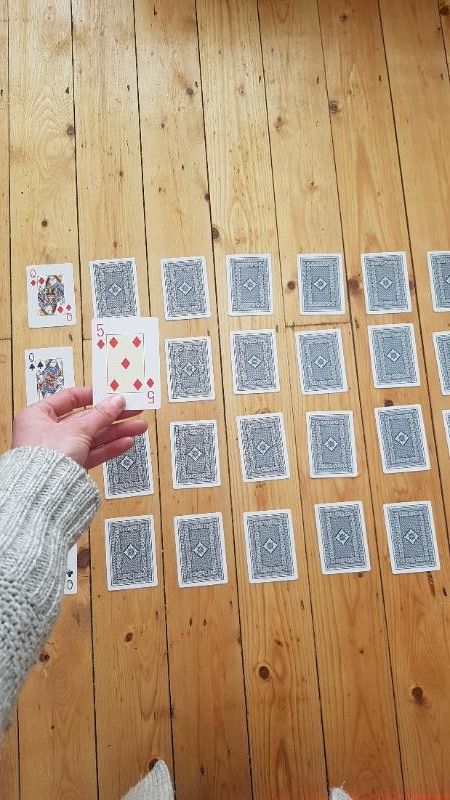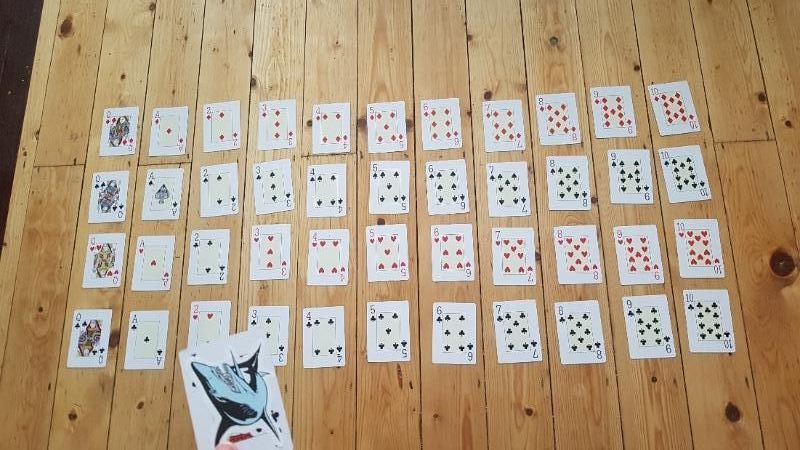Maths' Week weekend challenge
While today is the last day we'll celebrate Maths Week in school it continues until Sunday. Your challenge for the weekend is to play some maths games. Games involving dice and/or playing cards are excellent for developing children’s sense of number. Here are some of our favourites:
- Snakes and Ladders
- Snap
- Matching Pairs
- Bingo
- Go Fish
Here are two new games that you might not have played before. Both are played using a deck of cards, with the picture cards removed.
Make Ten Pairs: This game is played in a similar way to matching pairs.
- All number cards are laid out on a table face down.
- Players take turns to find the numbers that go together to make ten e.g. 1+9, 2+8, 3+7, 4+6, 5+5. If you find a pair of cards that make 10, you keep them.
- The winner is the player with the most pairs of cards making ten.
For an added challenge, count the number of tens you have e.g. 3 pairs of tens = 30!
The Shark Game:
- Sort the cards out so that you have all the number cards including the aces together. Separate the Queens, Kings and Jokers and put them to one side.
- Now take the Queens (or Kings of you prefer!) and place them in a column on the floor with plenty of space to the right of them. Choose one of the cards that you aren’t using and put a funny sticker or draw something on the card. In my case that was a King. I had a shark sticker and it inspired me to include a funny well- known song as part of the game.😉
- Now hide this “shark card” in among all the number cards. You are almost ready to start!
- Keeping the “shark” card hidden, place all the cards in 4 rows of 10 beside each of the Queens. You should have one card left over to start with. In my case it was 5 of Diamonds.
NOW Let’s Play! Who will find the Shark????? (See the photos below to show how we played the game)
The first player takes the left- over card and figures out where to put it. I had 5 of Diamonds so I looked at the Queen to help me and counted across until I found the right place.
Now pick up the card that’s in its place and put down the 5 of diamonds where it should go.
Give the card you pick up to the next player. The next player has to find where 6 of clubs goes.
Again, look at the Queens to find the correct suit, then count across. Pick up the card that is where you put the 6 of clubs and give it to the next player.
The game continues on like this until all the cards are in the correct place. If anybody comes across the “Shark” everybody has to sing the baby shark song! (with voices and actions!!). Then that person can hide it among the other cards until it is found again!
Continue until all the cards are in the correct order:
Note to Parents:
As children get better at the Shark game they won’t need to use the Queen to help them, or have to count all the way back from the ace (note we are using the ace as number 1). With practice, children will realise how all the numbers relate to one another in terms of what is above and below as well as beside. Guide them towards this realisation but see if they can figure it out themselves.
Ask questions like: where does the card go? How do you know? How did you do that so quick? Is there a quicker way?
Give your child lots of help and praise. It’s meant to be fun! Don’t worry they are learning lots!
Bonus Activities:
- You can of course change the song to another family favourite!
- You could set a timer and try to beat your record!
- You can also turn some of the cards around after you have put them in the correct place and point to a card a see if your child can guess it. Let them turn it over themselves to check if they are correct. (See picture below). You can increase the difficulty by turning them all around and taking one away and asking them to guess what one you have taken.
- Older Children: If you want a greater challenge you could make the number cards yourself in 4 different colours and use bigger numbers depending on your child’s ability, for example 1-15 or even 10-20, 21-31 (and beyond!) If you really wanted a challenge you could only include even numbers!
St. Philip the Apostle JNS, Mountview Rd, Coolmine, Dublin 15, Ireland Telephone: 01 8212992










